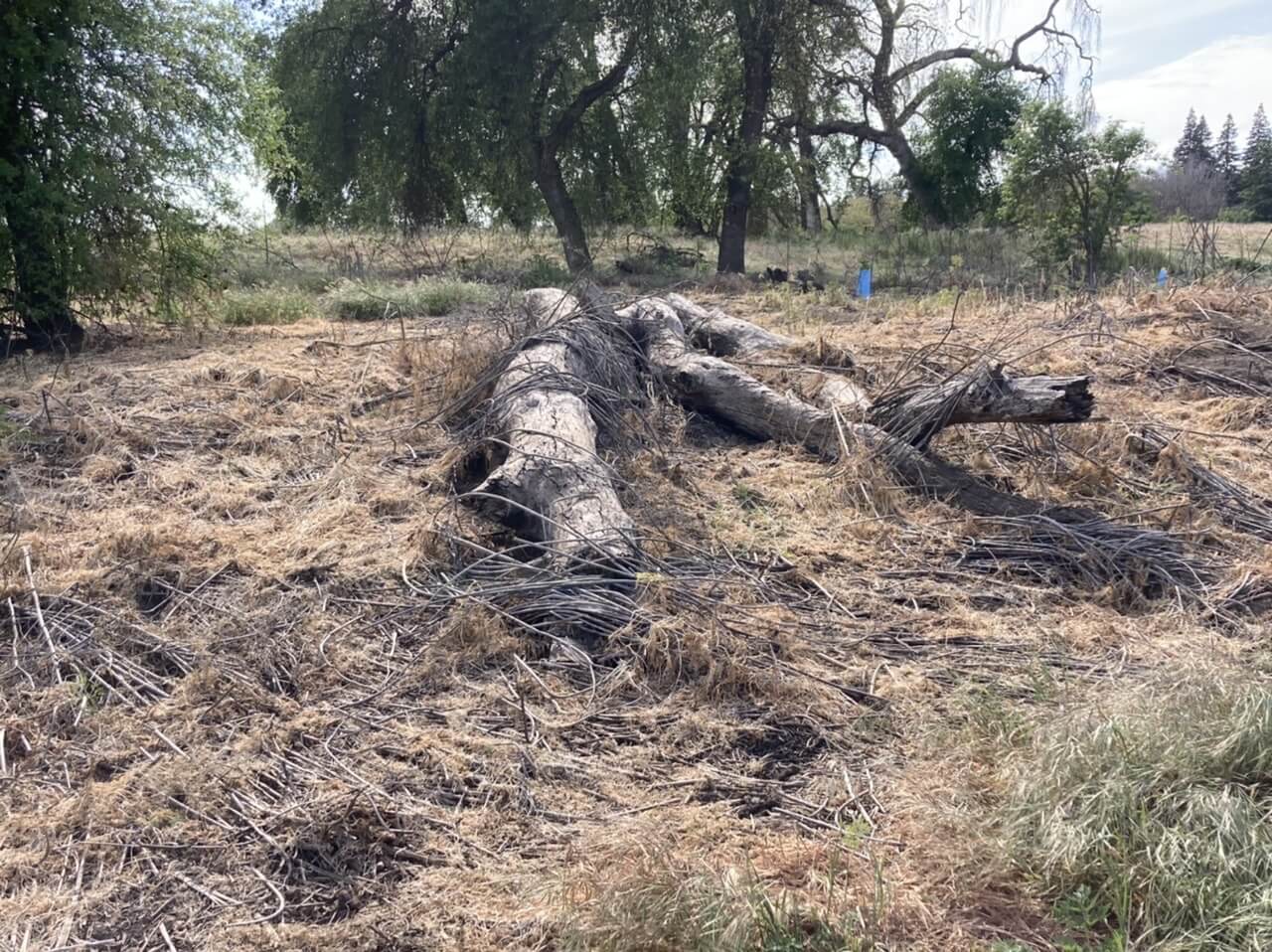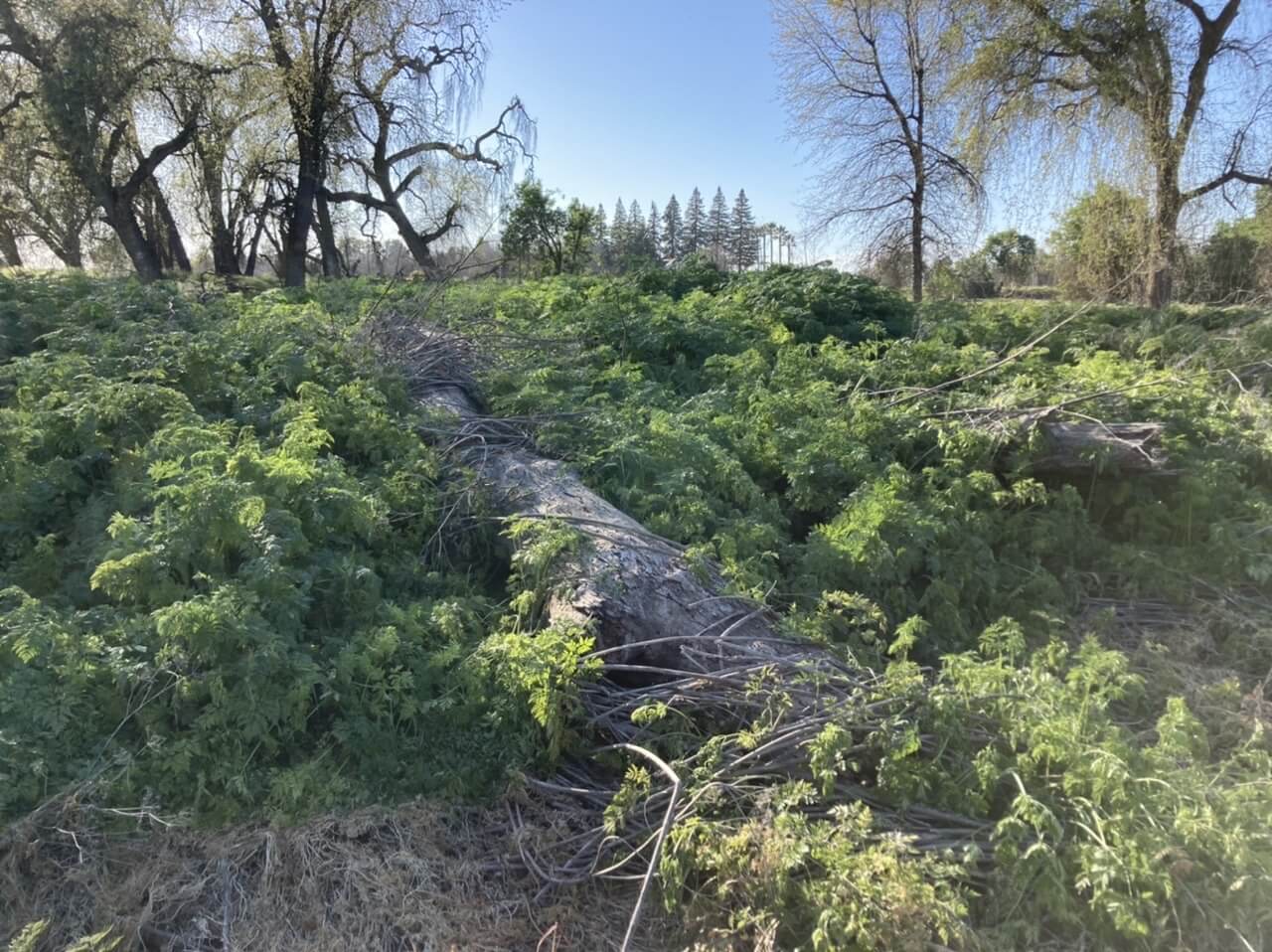A patch of poison hemlock (Conium maculatum) before being treated with herbicide.
This term, SNAP member Dimitri Katsiouleris has been working with Sequoia Riverlands Trust (SRT) to control poison hemlock and milk thistle infestations in Kaweah Oaks Preserve located in the San Joaquin Valley.
Using herbicide treatment, invasive species control at Kaweah Oaks Preserve began in February of this year in the Sierra Nevada foothills. Dimitri was responsible for carrying out this project for the SRT team. Removing the plants is necessary since ingestion, specifically with poison hemlock, can be fatal to livestock. Milk thistle can also impact livestock, causing nitrate poisoning if ingested. Eliminating these invasive plants will allow for a more diverse assemblage of native plants to replace them.
By April, the herbicide treatment successfully destroyed most of the poison hemlock before it set seed. However, because poison hemlock seeds can persist in the soil for years, it will take years of repeated treatments to exhaust the seed bank in the soil and eradicate the plant entirely.

The same patch of poison hemlock a month after herbicide treatment.
This invasive species removal project helps to improve the habitat, and therefore aligns with SRT’s mission of land conservation. SRT works to preserve land for conservation with easements or simply purchasing land to create nature preserves.
Kaweah Oaks Preserve is an example of a land purchase made by The Nature Conservancy in 1983, then transferred to what is now SRT in 2000. But preserving habitat is more than just preventing development on the land. Conservation requires actively improving the habitat to maintain its values and ecosystem. Removing invasive plants, such as poison hemlock, improves the land in the Sierra Nevada region because it enables a more diverse native plant community to take its place. It also helps increase the resilience and productivity of ecosystem services. Ecosystem services are the benefits provided to humans by the natural environment and from healthy ecosystems.
Another ecosystem service that is improved by this project is the preservation of forests in the Sierra. Its forests sequester carbon, regulating the earth’s climate. Kaweah Oaks Preserve is one of the last remaining valley oak riparian forests in the San Joaquin Valley making this an important conservation effort.
The recreation opportunities the Sierra Nevada provides encourage its communities be more more sustainable. While it is easy to focus on the economic benefits, it is also important to acknowledge the natural heritage of the region. SRT hosts events such as Go Native!, held this year on May 21 at the preserve, to learn about and celebrate the native cultures of the area. These events that are hosted by local Indigenous peoples and Tribes preserve land and the cultural history that runs deep through the roots of the region.
To learn more about the efforts of Dimitri and the entire SRT team, check out their website.


